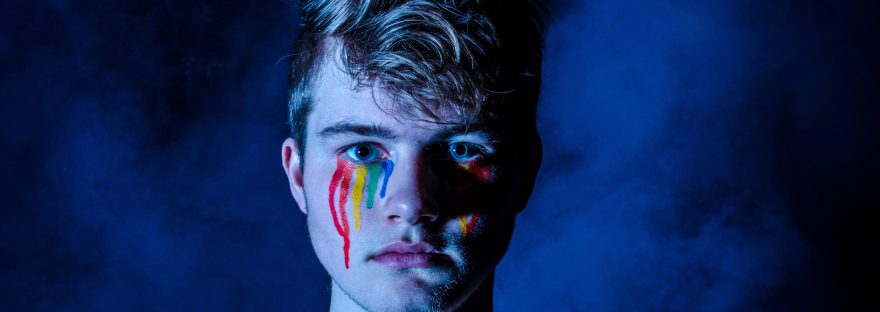After decades of ridiculing queer people for wearing makeup and dresses, cishet men have arrived as fashion trendsetters, wearing skirts on magazine covers and applying mascara on social media, earning millions in the process.
All the while, they make sure to convey that this does not take away from their masculinity or heterosexuality and that they are here to free the world from centuries of imposed patriarchal gender norms.
With such claims, cishets only regurgitate old bigotries in new forms.
Their desire to disassociate queerness from makeup is ultimately queerphobic, where cishets are the champions of innovation, while queers are gaudy, campy, or too much.
While corporations have been criticised for pinkwashing, social media influencers have avoided that scrutiny in the name of individual freedom.
After all, if we question men who wear frilly shirts, are we not just being hateful?
Well, not if they’re trying to sell that shirt to us while also emphatically stating, “I am in fashion, but I am not gay”.
According to a study, social media influencers are to teenagers what cartoon characters are to children: they identify with them and form parasocial relationships.
Young people then end up not just buying that shirt but also believing that wearing a frilly shirt is okay while being gay is not.
Of course, the influencers also forget to mention that wearing frilly shirts in real life has consequences.
While they get likes and brand endorsements, the queer people who have been wearing frilly shirts (and carrying them better) face harassment and violence.
Cishet men would like to claim they are the real victims because they aren’t allowed to wear makeup or skirts, while brushing off the structural violence we face for wearing them when it isn’t a trendy or quirky fashion that brands want to cash in on.
If brands are really concerned about degendering fashion, they need to be accountable to their consumers instead of exploiting queer desires for acceptance and visibility.
They need to not only provide better working conditions, wages, and healthcare to their employees but make actual queer-affirming changes in their policies and algorithms.
Social media influencers also fuel the desire to be seen, to be known, to be someone in how they show they’re living their lives.
We believe that to be an influencer is to have ‘made it’. There is an inherent charm in being appreciated for our uniqueness.
Except that kind of appreciation doesn’t usually come for those without a massive following.
Marginalised people using social media have pointed out how despite their creative output, the algorithm shoves them aside.
Besides, influencers haven’t made it either; they have created a culture so toxic that even they can’t maintain it.
In their desire to monetise their relatability, they have become identical: wearing the same clothes, using the same vibrator, posting the same gym selfies.
Queer people need to remember that while influencers have made a business of visibility, it doesn’t always mean validity or safety from violence – often visibility translates into violence.
There is more to fashion and makeup than the watered-down version acceptable to cishets that is promoted by brands.
There is more to validity than virality.
Ours lies in resilience and friendships, in how we are committed to queer liberation and not assimilation.
It is in how we teach each other how to really wing that eyeliner without caring which of us are ace or trans or a genderless kinky sub.
It is in how we hold each other, even when we barely interact on social media.
It is in our shared laughter and vulnerabilities.
It is not in buying rainbow brands but rather in building a world where all shades of the rainbow can shine through.


